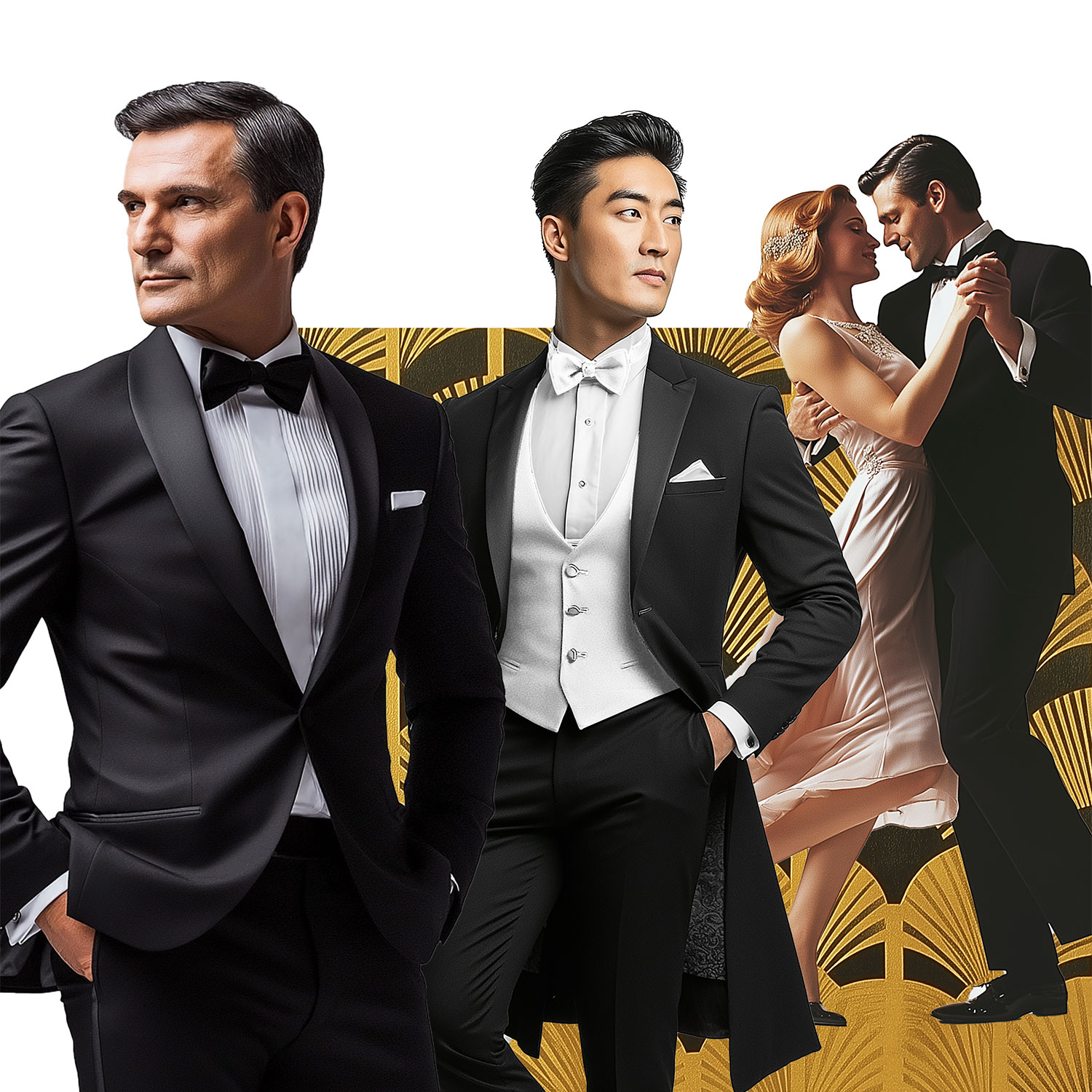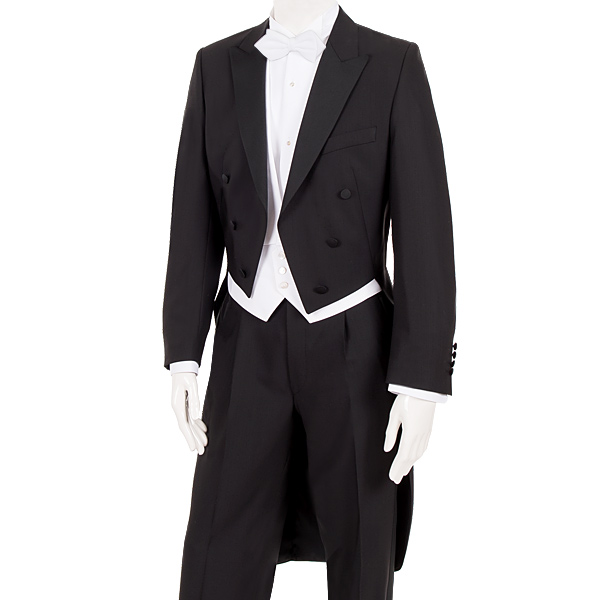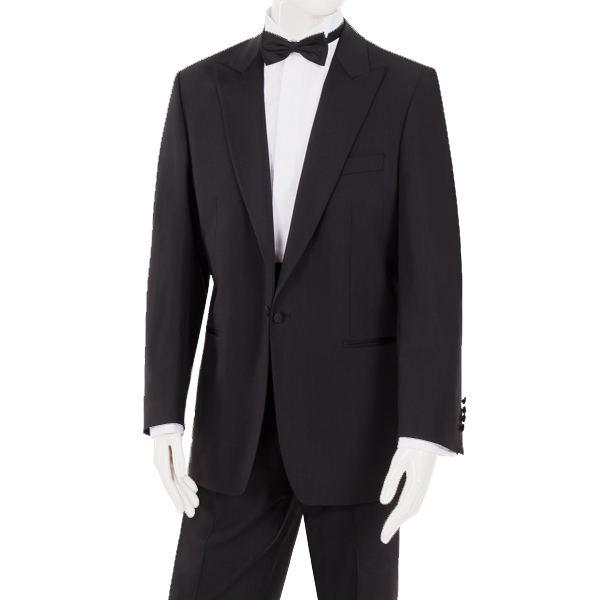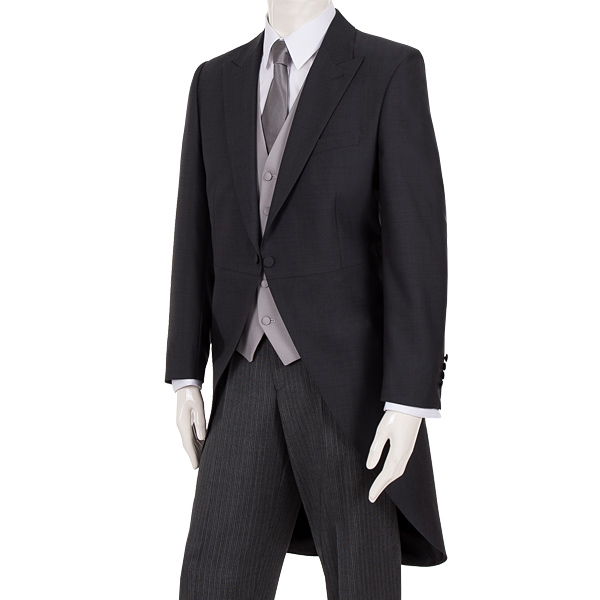Evening Attire
Lambert Hofer is your expert for exclusive men’s evening wear that meets the highest standards. Whether tailcoat, tuxedo, cutaway, or dinner jacket – each garment is crafted individually and made to measure upon request or offered in perfectly fitted ready-to-wear sizes. Made from the finest fabrics, these classic evening ensembles combine timeless elegance with impeccable craftsmanship. Lambert Hofer not only offers exquisite tailoring, but also first-class service – delivering your attire anywhere in the world, exactly where you need it.
The Tailcoat
The tailcoat – considered the king of formal menswear – embodies timeless elegance and exquisite refinement. It is the official choice for the most formal occasions and is typically indicated by the “White Tie” dress code on invitations.
As a general rule: A tailcoat should be worn after 6 p.m. – or more precisely, after nightfall. A classic tailcoat ensemble includes:
- a black top hat
- a white piqué waistcoat
- a white tailcoat shirt with a piqué front
Also essential are:
- a white bow tie
- black patent leather shoes
One important detail: no wrist watch is worn with a tailcoat. Instead, a pocket watch with it’s chain kept in the waistcoat pocket is considered appropriate.
The tailcoat ranks at the top of formal attire and is reserved exclusively for evening events. The tailcoat jacket features peaked lapels and the characteristic swallow tails at the back. The front is cut short at the waist and the jacket is always worn open.
Tailcoat trousers are adorned with two silk stripes (gallons) down the outer seams and are worn without a belt – instead, braces are used. The special tailcoat shirt features a stiffened piqué front, detachable studs or screw buttons, and a wingtip collar. The white waistcoat and bow tie are both made from cotton piqué.
The Tuxedo
The tuxedo or dinner jacket, often indicated as “Black Tie” on invitations, is the perfect choice for social events held after 6 p.m. As the so-called “semi-formal evening suit,” it is the evening counterpart to the Stresemann and ranks one level below the tailcoat.
The term “tuxedo” originates from its early use as a smoking jacket in gentlemen’s lounges. In the United States, it is commonly known simply as a tuxedo.
A classic tuxedo ensemble consists of:
- Jacket: a mid-length, single- or double-breasted jacket without back vents, featuring one button closure and a peaked lapel (or shawl collar), usually faced with satin or silk. The pockets are piped.
- Trousers: made from the same fabric as the jacket, without belt loops, and with a single satin galloon on the outer seams.
- Shirt: white, with either a wing or turndown collar, French cuffs, and a concealed button placket.
- Accessories: a black bow tie and a cummerbund made of silk satin to cover the waistband.
The tuxedo is a stylish and formal evening suit – ideal for elegant nighttime celebrations.
The Cutaway
The cutaway, also known as the morning coat, is the daytime equivalent of the tailcoat and is worn for formal events before 6 p.m. It resembles the tailcoat with its swallow-tailed jacket, but differs in color and styling.
Typically worn in light or dark grey, the cutaway is paired with striped trousers (known as Stresemann trousers). It is accompanied by:
- a light grey waistcoat
- a white shirt with a turndown collar
- black shoes
- and often a silver-grey tie
Unlike the modern Stresemann, which is worn for less formal occasions, the cutaway is a traditional formal daywear ensemble – frequently chosen for weddings. It is especially common for grooms and fathers of the bride or groom to wear a light grey version, with waistcoat and trousers often crafted from the same fabric as the coat. Accessories include a black or silver-grey top hat and, traditionally, a white chrysanthemum in the buttonhole.
While the cutaway was originally considered bourgeois dress (with nobility typically wearing uniforms for formal occasions), it is now often seen at aristocratic weddings across Europe. However, cultural differences in color symbolism should be considered: in Germany, black cutaways are traditionally reserved for funerals, whereas in Spain they may also be worn at weddings.






